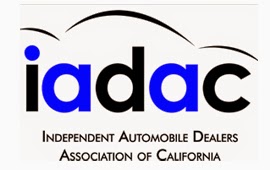You may have read the title and figured it sounds kind of absurd, but it is all too true. There is a relationship between the trucking and 3D printing industries. But where do these seemingly disparate industries connect? And furthermore, what is 3D printing?
3D printing, otherwise known as additive manufacturing, is a process by which a three-dimensional object is created using a digital file. It is called additive manufacturing because the process involves laying down a layer of material bit by bit until an object is created. Each layer is applied using a technical process, thinly sliced, across a membrane. 3D printing offers an advantage over traditional manufacturing in that you use less materials.
This method of manufacturing represents a true shift into the future. It all begins with a 3D model created on a computer. The model is digitally scanned and then sliced, which basically means the software divides the model into hundreds or thousands of horizontal layers. Once the model is ready to go, it can be programmed into the 3D printer using a USB, SD card or Wi-Fi connection.
It really is a fascinating way to create an object. Many industries can customize 3D printing machines to suite their needs and applications, which is exactly what trucking OEMs are doing. Would you ever have guessed they were gearing up to use 3D printing to accelerate their business models and increase efficiency?
Trucking and 3D Printing
Trucking is dipping its toe into the 3D printing world through the process of remanufacturing. Remanufacturing traditionally involves removing material for restoration, but when 3D printing is involved, nothing is removed. Rather, the remanufacturing of the truck part involves adding additional layers to smooth out any problems.
As truck parts age, fleet technicians and managers are always looking for ways to extend the life of those parts. If the opportunity presents itself, why not jump on it? It just so happens that this time it is handled through 3D printing. 3D printing changes the remanufacturing process by allowing a core component to be essentially built back up. The bigger the component, the higher the cost to replace.
This is where additive manufacturing comes in, you can extend the overall lifecycle of the component. When you go with traditional remanufacturing methods, removal techniques put a limit on how many lifecycles you will get out of that component. Regrinding metal, over time, simply wears the part down to a point where it is no longer safe to operate with.
Yet, with 3D printing, you can put replacement layers back onto a part, essentially breathing new life into it. In this way, you can remanufacture the part over and over without having to replace it just because it has worn down. Imagine being able to get six, seven, eight or more lives out of one original part.
OEMs have already begun using 3D printing to radically alter their manufacturing process. Navistar, as one example, restores cylinders using bore spray welding, which deposits the original metals onto the part and essentially returns it to its original specifications.
Certainly, addictive manufacturing did not start with 3D printing. Yet, new techniques are breathing even more innovation into the process. Whether it be through cold spraying or other methods, applying complex metals to surfaces is becoming easier. Still, a lot of the new methodologies are under development and still unproven. Properly operating truck parts are critical to the safety of truck drivers and others on the road.
How is it Done
3D printing is applied in the trucking industry through two methods. The first method is called directed energy deposition. This method is used to make standalone parts or to repair damage to an existing part. This method can also be used to convert a component to a new specification. This method can also be combined with other methods to create new core components or create multiple components to be put together into a larger piece.
The other 3D printing method makes internal components for existing parts. One method used is plasma transfer, which uses plasma to reform metals and then layer them onto a core component. Companies primarily use these versions of additive manufacturing to print or remanufacture low-volume parts where the original might no longer be available.
The key is having the original design blueprint for the part. With the original design blueprint, you can print the part or part component and remanufacture it many times over. 3D printing can also be used to print assembly process part batches. Making metal fixtures the traditional way is far more expensive than merely printing them for a few bucks. And with limited use parts, you can be assured they will last a long time.
But what about cost? Certainly, this isn’t a free value proposition. Fortunately, 3D printing has a tooling cost of zero, but it is a little more expensive from a piece part perspective. But even more than saving money on a part, the other part of the equation is time. As anyone in business will tell you, time is money, and being able to save time can – in the end – save a lot of money.
The real advantage to 3D printing and additive manufacturing is the time saving factor. Being able to 3D print your own part, rather than order and wait for it, puts a lot of time back in your pocket. Furthermore, if you print something and it doesn’t work, all you need to do is go back and rework it and try again. The ability to quickly try new methods gives businesses a distinct advantage, increases overall efficiency and helps to reduce cost.
3D Printing and the Aftermarket
While additive manufacturing by itself has been around a lot longer than 3D printing, 3D printing as a technique because it enables companies using it to deploy new products or components relatively quickly, when compared to the old methods. This is also quite true for companies operating in the aftermarket segment.
Companies moving parts in the aftermarket very often must deal with old, obsolete, or otherwise non-functional parts. In many cases, these parts may be hard to come by. 3D printing allows aftermarket providers to produce parts that would otherwise be far too expensive from a remanufacturing and casting perspective.
In many cases, OEMs won’t even produce a low volume of old or obsolete parts. Suppliers working in that field are very particular about what they will agree to recreate. With 3D printing, trucking companies get around the tough casting issue and overall costs decrease. Simply put, 3D printing is critical to aftermarket OE remanufacturers.
When part volumes decline, suppliers exit the business. Yet, with 3D printing, OE providers ensure they are supporting any client with any part need. It becomes easier for them, and the fleets they work with, to manage their commercial motor vehicles from the moment they step off the lot to the moment they are scrapped.
Not the Final Solution
It is important to remember that, as with anything else, additive manufacturing and 3D printing has limits. While these techniques bring a lot of value to the remanufacturing and aftermarket space, they are not an end-all, be-all to all problems. Indeed, there are limits to what this technology is capable of.
One of the big limits currently inhibiting what can be done with the technology revolves around the type of material being used. With some metals, current 3D printing technology simply does not have the right resolution to meet the needs of certain applications.
The specific problem lies in something called material flexibility. As an example, there is not just one type of aluminum, there are many. When a 3D printing machine can layer on a dozen different types of aluminum, that will be a game changer. Remanufacturing using 3D printing is only as good as the technology underpinning the printing.
In other words, the printers must be able to create the core components using the material that it can manipulate. There are also some technical issues to get past. Some vehicle components have surface parts that require complex machining and tooling. With the material limitations on additive manufacturing these days, there are many parts that simply cannot yet be printed.
Another complication lies in the metallic and non-metallic components of a part. Not all printers can switch between materials quickly and cost-effectively. Still, over time, as the technology evolves, these limitations will decrease. 3D printing for trucking applications will greatly influence how materials are sourced. As these technologies mature, trucking companies will get even more out of their use.
from Quick Transport Solutions Trucking Blog https://ift.tt/2Pac2cO



Sourced by Quik DMV - CADMV fleet registration services. Renew your registration online in only 10 minutes. No DMV visits, no lines, no phone mazes, and no appointments needed. Visit Quik, Click, Pay & Print your registration from home or any local print shop.





0 comments:
Post a Comment